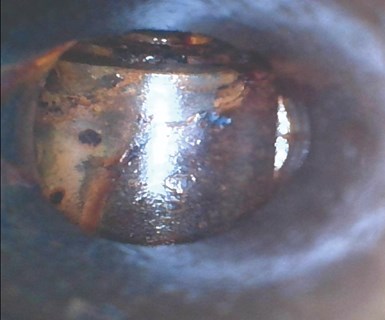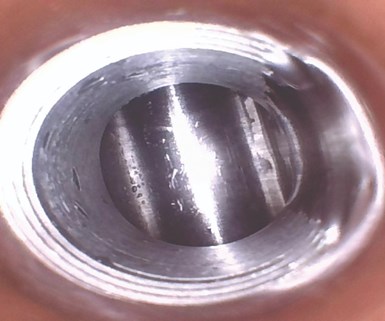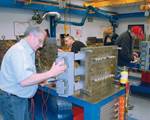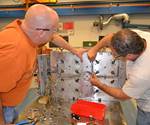
During a training exercise, the use of a flowmeter indicated more than a 13% increase in flow. Image courtesy of Mold Trax.
With more complex tooling, including conformal cooling passages, you should consider alternatives to traditional methods of cleaning. There are many products on the market now that use non-caustic chemicals, enable a safer tool room and in most cases, provide more effective cleaning.
Along with these new chemicals, many companies are introducing new flushing systems as well. There is a wide monetary range, so you will need to look at the features and benefits of each system to determine what is best for your facility.
Six key questions to ask before making any flushing system investment:
- Is live data feedback valuable to your tool room?
- Is software integration compatibility important?
- Are different chemicals required for what your tool room wants to accomplish?
- What is the average flushing time for each system?
- What are the recurring costs of each system?
- What is the life expectancy of the system (unit and chemical)?
The goal is to save time and labor with a flushing system that will allow your technicians to take care of cooling passages, heat exchangers and other auxiliary equipment running water while performing other tasks during a PM.
When investing in a flushing system, you will want to have universal fittings rigged onto each piece of equipment that can be flushed. For example, plumbing in a “T” ball valve with a shutoff onto your heat exchangers. This consideration is necessary, as this will allow your maintenance team to hook up directly at the press and perform routine cleanings.
More tool rooms are also bringing in flow meters and endoscopic cameras. If you are considering a flushing system, these are great tools to monitor and document both visual and quantitative data. These tools allow users to benchmark readings during PMs and help to determine if future PMs will require flushing.
 Baffle before flushing. Images courtesy of iD Additives Inc.
Baffle before flushing. Images courtesy of iD Additives Inc.
Steve Johnson of Mold Trax proved the value of both tools during a recent workshop. A visual representation of a cooling channel did not showcase an apparent change, however, using a flowmeter the GPMs (gallons per minute) increased from 2.25 GPMs to 2.56 GPMs. This change represents more than a 13% increase in flow. Also, the pressure increased to 5 pounds per square inch (psi), indicating a cleaner passage.

Baffle after flushing
Keep in mind, as little as 0.030-inch buildup on cooling lines can translate to upwards of a 60% reduction in cooling capacity, according to Mold Trax’s Steve Johnson during Amerimold Connects Tool Room Live! Demonstration. The odds are that your tool room technicians will need to flush during every PM, but the length of each flushing will be severely shortened, increasing your time savings.
Related Content
-
Hands-on Workshop Teaches Mold Maintenance Process
Intensive workshop teaches the process of mold maintenance to help put an end to the firefighting culture of many toolrooms.
-
The Ins and Outs of Hot Runner Temperature Control
A training checklist that explains the why and how of proper hot runner temperature control and system management.
-
Maintaining a Wire EDM Machine
To achieve the ultimate capability and level of productivity from your wire EDM on a consistent, repeatable and reliable basis, regular maintenance is a required task.















